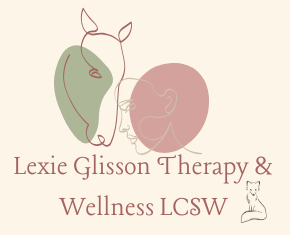How EMDR Therapy Can Help Heal from Trauma?
Trauma can affect us in many ways—whether it’s from a single event, ongoing stress, or unresolved emotional wounds. Healing from trauma can feel overwhelming, but there are powerful tools that can help. One of these tools is Eye Movement
Desensitization and Reprocessing (EMDR) therapy. If you’re new to EMDR, this guide will walk you through what it is, how it works, and how it can help you or your loved ones heal from trauma.
What is EMDR Therapy?
EMDR therapy is a highly effective, evidence-based therapeutic approach that helps people process and heal from distressing memories. It was originally developed by psychologist Francine Shapiro in the late 1980s to help individuals with post-traumatic stress disorder (PTSD), but over time, its applications have expanded to include a wide range of emotional challenges.
EMDR works by helping the brain reprocess traumatic memories in a way that reduces their emotional charge and allows the individual to integrate the experience more healthily. It’s distinct from other forms of therapy because it incorporates bilateral stimulation (BLS)—often through guided eye movements, taps, or sounds—while the client recalls the traumatic memory.
How Does EMDR Work?
The key to EMDR is the concept of bilateral stimulation. During a session, your therapist will guide you to recall a specific distressing memory or thought. While you do this, you will engage in eye movements (or other forms of BLS) which are believed to mimic the natural process of eye movement during REM sleep. This helps the brain process the traumatic memory and move it from a “stuck” state to a more adaptive, less emotionally charged state.
EMDR works in phases:
- History-taking and preparation: Your therapist will get to know your background, the nature of the trauma you’ve experienced, and your goals for therapy.
- Identification of target memories: Together, you’ll identify the memories or situations you’d like to process.
- Desensitization: This phase involves reprocessing the memories while engaging in bilateral stimulation, which helps decrease the distress related to the memory.
- Installation: The goal is to replace negative beliefs with more positive, adaptive ones.
- Body scan: After processing the memory, the therapist checks if there’s any physical tension left in your body, which could indicate unresolved emotional material.
- Closure: You’ll reflect on the work done during the session and return to a state of calm and groundedness.
- Reevaluation: In future sessions, the therapist checks to ensure the memory no longer causes distress and that new insights have been integrated.
Types of Trauma EMDR Can Help Heal
EMDR has been found to be effective in treating a wide variety of trauma-related conditions, including:
- Post-Traumatic Stress Disorder (PTSD): Whether it’s from military combat, sexual assault, or a natural disaster, EMDR can help individuals process memories and reduce the emotional charge attached to them.
- Complex Trauma: Chronic trauma or abuse that happens over time, such as childhood neglect or emotional abuse, can be treated effectively with EMDR.
- Anxiety and Panic Attacks: Many people with anxiety have experienced trauma, whether they’re aware of it or not. EMDR helps process these hidden memories that contribute to anxiety symptoms.
- Phobias: Whether it’s a fear of flying, heights, or social situations, EMDR can help clear the root causes of these fears.
- Grief and Loss: EMDR can also help individuals process grief, especially if unresolved traumatic memories are contributing to feelings of sadness or despair.
- Addiction: Often, addiction is a coping mechanism for past trauma. EMDR can help address the underlying trauma, which can lead to a reduction in addictive behaviors.
Statistics on the Effectiveness of EMDR
- Success Rate for PTSD: Research shows that 77-100% of individuals with PTSD who receive EMDR therapy experience a reduction in symptoms. Studies indicate that 84-90% of PTSD patients have significantly reduced symptoms after 3-6 months of EMDR treatment (Shapiro, 2014).
- Rapid Healing: EMDR is known for its efficiency. A study published in the Journal of EMDR Practice and Research found that EMDR significantly reduced PTSD symptoms in just 3-12 sessions—a much shorter time frame compared to other therapeutic approaches.
- Effectiveness Across Populations: EMDR has been shown to be effective for various populations, including children, veterans, and survivors of sexual assault. In fact, a study found that 80-90% of people with PTSD saw improvement after EMDR therapy, regardless of age or the nature of their trauma (Van der Kolk, 2014).
- Long-Term Benefits: EMDR doesn’t just provide temporary relief; it leads to long-lasting changes. Studies show that clients who undergo EMDR report greater improvements in overall well-being and emotional regulation even years after completing therapy (Carlson et al., 1998).
- Reduced Distress in Anxiety and Depression: In addition to PTSD, EMDR has also been shown to be effective for anxiety and depression. One study found that 40-60% of patients with anxiety and depression saw symptom reduction after a series of EMDR sessions (Lee & Cuijpers, 2013).
Why Choose EMDR Therapy?
What sets EMDR apart from other trauma therapies is its focus on reprocessing traumatic memories without requiring the client to relive them in detail. It’s a gentle but powerful approach that’s often faster than traditional talk therapy. While each person’s experience is different, many individuals find that EMDR helps them heal from trauma in ways that feel more transformative and lasting.
Final Thoughts
If you’re struggling with the effects of trauma, whether it’s PTSD, complex trauma, or any other emotional challenge, EMDR therapy may offer you the support you need to heal. With its unique, scientifically-backed approach, EMDR helps you process difficult memories, reduce emotional pain, and restore your mental and physical well-being.
Are you curious about how EMDR can help you or a loved one? Reach out to schedule a consultation and take the first step toward healing.
.









